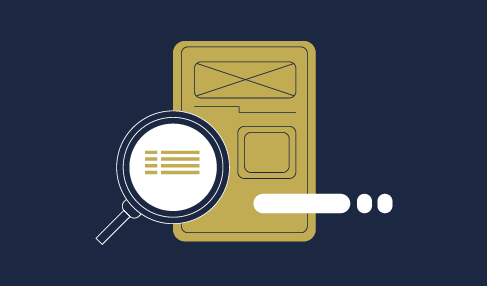Did you land here by searching for “how to get ahead in a user experience job”? Or, maybe something more like “soft skills needed in UX”? In either case, you’re in the right place. There are four basic keys to this wisdom, and while none of them require advanced degrees, similar to many of the skills required for the future of work – all four require some tutelage and a lot of practice. Because the most important skills to master as a UX practitioner of any flavour – UX designer, UX researcher, UX writer, UX architect, UX strategist, and so on – are the so-called “soft” skills of attentive listening, fostering psychological safety, practising clear and consistent communication, and knowing your audience. Today, let’s take a look at attentive listening – what it is, why it is important, and a tip or two on improving your ability at putting this skill to good use.
[Photo Credit: photo by Kelisa Bernard on Unsplash]
Attentive listening – sometimes inaccurately referred to as active listening – is surprisingly simpler than it sounds, and once explained, is far more difficult to put into practice than one would think. At its core, attentive listening is about being mindful of your own internal thoughts and ideas while conversing with another or several other people, so as to silence those inner “voices” in order to truly hear what the other person is saying. While this may sound easy, attentive listening also means doing your best to listen openly to the other person so as to reserve any and all judgements that your brain may try to float up to your consciousness.
While others are speaking, it is quite likely that a new thought or idea will come to mind – this is the nature of discoursing with other people, after all, and you won’t want to forget that thought while you’re listening to someone else speak, so it’s at this point that many of our best-intentioned attentive listening suddenly breaks down. Well-intentioned though it may be to want to remember your addition to the conversation for an appropriate moment to speak, it’s this focus on remembering which makes it virtually impossible to actually attentively listen. Many folks – for a variety of reasons such as cognitive or neuro diversities, to name two – have issues with short-term memory, and so for many folks, some kind of “coping skill” is required to help supplant the memory issues.
A tried and true technique is to consistently have paper and pen (or a smartphone) to jot down a short note to self. Even a single word is often enough to remind you, if/when the moment is appropriate, of what you had thought of and wanted to add to the conversation. Sometimes, this jotting down of a word or a few words is also enough to help you realize that perhaps you no longer want to share that thought for any reason, or you changed how you had planned to bring it up – again, perhaps based on something said after you jotted down your note-to-self.
In a situation where you ask someone or a group of people a question and are expecting or waiting for a response, it’s important to be comfortable with silence. It’s very much human instinct to fill a void, and in conversation, this means filling silences with more words. In a focus or any other group, it is likely that there are folks who would like to speak up, but are shy or hesitant for one of many other reasons, and for these folks, an elongated silence may be the key to ever hearing their input and feedback. In one-on-one or small group conversations, especially amongst people who don’t know each other extremely well, the tendency to misread non-verbal cues, or worse yet, as on a call without video, there are no non-verbal cues to read, the impulse to fill those conversation voids can be overwhelming. It’s these moments where it is perhaps most important to be comfortable with silence, counting silently in your head to five before verbally prompting or otherwise checking in (“Did I lose you? Are you still there?”).
[Photo Credit: photo by Mimi Thian on Unsplash]
If you are interviewing someone – whether a user, stakeholder, or prospective employee, and you have asked a question and are waiting for an answer, then remaining silent no matter how uncomfortable that gets is absolutely vital. Doing so maybe the only way to get as truthful and as unbiased an answer as you can hope for, given your unique situation at that moment.
Another aspect of attentive listening, and something that can help if you find attentive listening difficult to do or maintain for any reason, is getting curious. Curiosity is the core commonality which all UX practitioners must have plenty of in order to not just be successful at their jobs, but more importantly, perhaps, to find satisfaction in their work. Luckily, while curiosity is not exactly teachable, it can be regained if you feel you’ve lost it. Play “The 3 (or 5) Why’s Game” with whatever the situation/thing/person is, asking yourself (or Google, or the subject of your curiosity, as the case may be) “why?” and obtaining or listening for that answer and then asking “why?” again, and again (and again, and again, if it is possible, and you haven’t annoyed your conversationalist). Do this about things you don’t need to ask why about if you’re wondering how to practice this skill or “mental muscle,” like when you see a cat cleaning itself: ask “why?” or when you see a friend buy a particular brand of anything, ask them “why?” And, if anyone asks you why you’re asking, you can honestly tell them you’re “just curious.”
Hopefully, this has provided some insight not just on what attentive listening is, but on the many benefits – professional and personal – associated with it, as well as a few tips on how to practice and employ this skill to your benefit as a UX designer, UX researcher, or any type of human-centred problem-solving situation. This is one of the foundational skills to being successful in this field, and with consistent practice and the self-awareness to recognize when you’ve strayed from listening attentively, mastery of this is part of the basis for both a successful UX career and harmonious interpersonal relationships.





